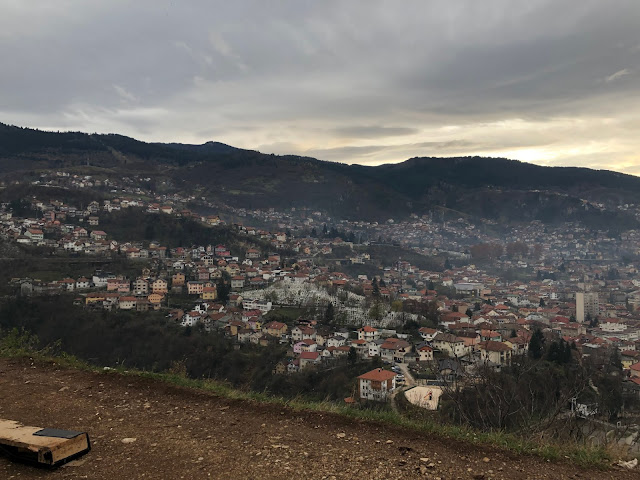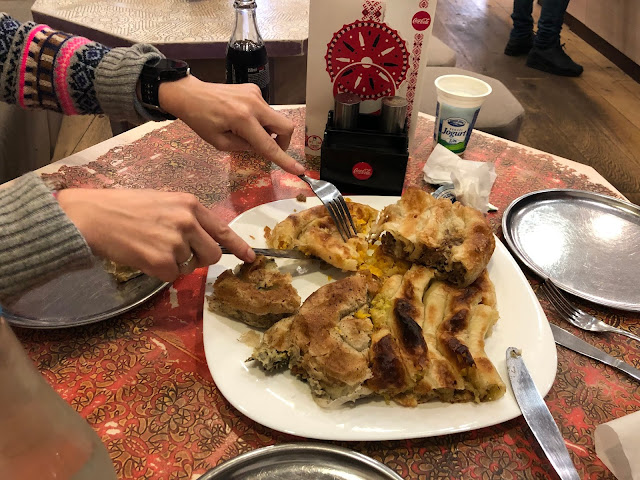guest-house
Our Sarajevo lodging was on Hendek street in the Vratnik area, up the hill and east of the Yellow Bastion. Hendek is a typical narrow street that can barely hold one car-width. Many of the dwellings and stairs on the street feel as if they've been there since time began, and maybe they have. Our guest-house is either entirely new or thoroughly remodeled, clean and comfortable. The marble stairs were swept and shiny, and on two levels housed six guest apartments.
The location of the guest-house was ideal. We walked down steep cobblestone streets to reach the Baščaršija, a centuries-old merchantile area, and from there most every site we wished to see was within walking distance. We walked between 10-12 miles a day around the city.
Vratnik is among the oldest neighborhoods in Sarajevo, at least 500 year old, and would be well worth exploring in more detail on a longer trip. It still has city walls and gates in places. It was walled in the 18th century to make it safe from foreign attacks.
Hendek street
Hendek street
our apartment; we had a bedroom, bathroom, living room and kitchen
kitchen, looking towards living room
living room towards kitchen!




















































